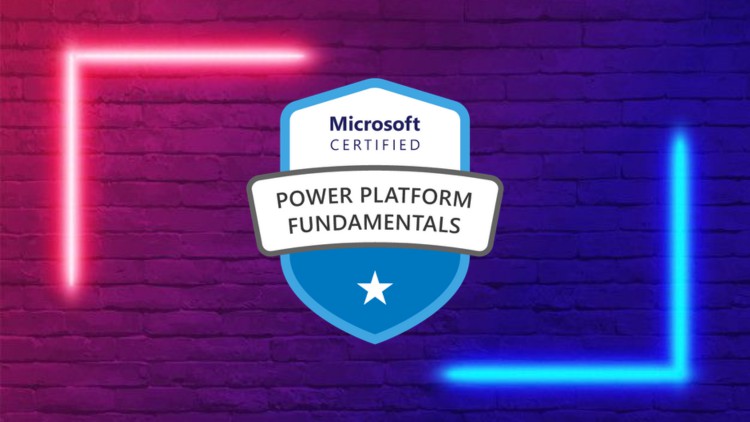
[New] Get your PL-900: Microsoft Power Platform Fundamentals Certification 2022
What you will learn
Describe the business value of Power Platform
Demonstrate the capabilities of Power Apps
Demonstrate the capabilities of Power BI
Identify the Core Components of Power Platform
Description
Description
The Microsoft Power Platform Fundamentals or PL-900 important domains,
- Business value of Power Platform
- Identification of core components in Power Platform
- Business capabilities of Power BI
- Business value of Power Apps
- Business value of Power Automate
- Business value of Power Virtual Agents
Details
Describe the business value of Power Platform
Describing the value of Power Platform applications
- Firstly, analyzing data by using Power BI
- acting with Power Apps
- building solutions that use Microsoft Dataverse
- Then, automating with Power Automate
- After that, interoperating with external systems and data
- Finally, creating powerful chatbots using a guided, no-code graphical interface
Describe the business value of extending business solutions by using Power Platform
- describe how Dynamics 365 apps can accelerate delivery of Power Platform business solutions
- describe how Power Platform business solutions can be used by Microsoft 365 apps including Microsoft Teams
- describing how Power Platform business solutions can consume Microsoft 365 services
- describing how Power Platform business solutions can consume Microsoft Azure services including Azure Cognitive Services
- describe how Power Platform business solutions can consume third-party apps and services
Describe Power Platform administration and security
- describing how Power Platform implements security including awareness of Microsoft Dataverse security roles, Azure Identity Services, and Access Management (IAM)
- describe how to manage apps and users
- describe environments
- describing where to perform specific administrative tasks including Power Platform Admin center, Microsoft 365 admin center
Start preparing using the Microsoft PL-900 Study Guide!
Identify the Core Components of Power Platform
Describe Microsoft Dataverse
- Firstly, describing the Power Apps user experience
- identifying tables, columns, and relationships
- describing environments
- Then, explaining use cases and limitations of business process flows
- explaining use cases and limitations of business rules
- Subsequently, describing the Common Data Model (CDM)
- Finally, describe how to use common standard tables to describe people, places, and things
Describe Connectors
- describe the native Dataverse connection experience
- describe triggers including trigger types and where triggers are used
- describing actions
- describe licensing options for connectors including standard or premium tier Identify use cases for custom connectors
Demonstrate the capabilities of Power BI
Identifying common Power BI components
- identify and describe uses for visualization controls including pie, bar, donut, and scatter plots and KPIs
- describe types of filters
- describing the Power BI Desktop Reports, Data, and Model tabs
- describe uses for custom visuals including charts or controls Compare and contrast dashboards and workspaces
- compare and contrast Power BI Desktop and Power BI Service
- compare and contrast dashboards, workspaces, and reportsConnect to and consume data
- combining multiple data sources
- cleaning and transforming data
- describing and implementing aggregate functions
- identifying available types of data sources
- describing and consuming shared datasets and template apps
Building a basic dashboard using Power BI
- designing a Power BI dashboard
- designing data layout and mapping
- publishing and sharing reports and dashboards
Demonstrate the capabilities of Power Apps
Identifying common Power Apps components
- Firstly, describe differences between canvas apps and model-driven apps
- describe portal apps
- identify and describe types of reusable components including canvas component libraries and Power Apps Component Framework (PCF) components
- Lastly, describe use cases for formulas
Building a basic canvas app
- describe types of data sources
- connect to data by using connectors
- combine multiple data sources
- use controls to design the user experience
- describe the customer journey
- publish and share an app
Demonstrate the capabilities of Power Automate
Identifying common Power Automate components
- identifying flow types
- describing use cases for flows and available flow templates
- describe how Power Automate uses connectors
- describing loops and conditions including switch, do until, and apply to each
- describe expressions
Coupons
| Submit by | Date | Coupon Code | Discount | Emitted/Used | Status |
|---|---|---|---|---|---|
| – | 12/21/2021 | CED6CD384522C83BB76E | 100% OFF | 1000/107 |
working
|